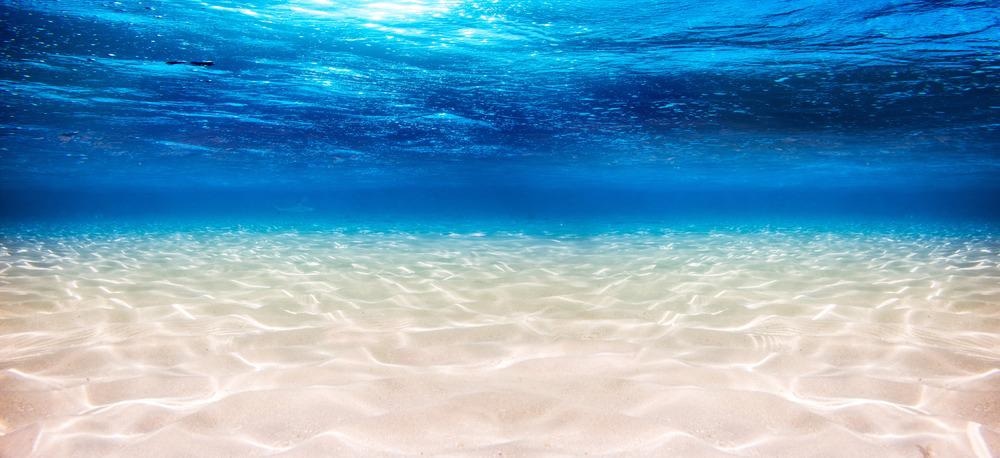Led by postdoctoral researcher Khadija Yazda, a group of scientists within the Department of Physics at McGill University in Quebec, Canada, has been researching a processing technique to realize high-performance membranes for exploitation in renewable energy applications. Presented in Nano Letters, the team’s results may hold a key to producing large enough but also strong enough material components to withstand demanding seawater energy harvesting.

Image Credit: stockphoto-graf/Shutterstock.com
Blue Energy and Selectively Permeable Membranes
Observing the Jordan River flowing into the Dead Sea in 1973, Prof. Sidney Loeb was inspired to invent a method of capturing the power released during the natural process when two bodies of water of different saltiness (known as the salinity) mix.
This type of mixing usually occurs between fresh and saltwater. The difference in the salt concentration produces blue energy and harvesting it typically involves pressure retarded osmosis.
Membranes are barriers that selectively transport ions or molecules. During osmosis, selectively permeable membranes are used, allowing the passing of one constituent of a saltwater solution, either the dissolved salt ions or the water molecules. Most large-scale blue energy projects to date have been blighted by poor efficiency, obstructed by the existing membrane technology. Although displaying promising amounts of power generation relative to their size, producing appropriately large and strong nanomaterials has presented real challenges, such as scaling up and robustness, in membrane development,
Combining Pore Fabrication with a Hybrid Membrane
Addressing some of the innate problems surrounding the mechanically fragile nature of the two-dimensional (2D) nanomaterials used in membrane technology has become the focus of the work of Dr. Yazda and her team of McGill University physicists.
The exceptional selectivity of 2D nanomaterials makes them integral in this type of process. Coupling a fast, precise technique called tip-controlled local breakdown (TCLB), originally developed at McGill, with a hybrid membrane, they have demonstrated high osmotic power density without the need for the thinnest materials systems to be implemented.
Supporting monolayers of hexagonal boron nitride (hBN) are coated onto silicon nitride (SiN) membranes, enabling the production of robust selectively permeable, hybrid membranes.
Hexagonal boron nitride (hBN), the most stable crystalline form of the compound, is sometimes called white graphene because its layered structure resembles graphite. The assembly of hexagonal pores forms a nano-mesh that allows the desired combination of properties needed in the blue energy applications to be fabricated.
Using TCLB, the group prepared a range of samples, experimenting with various configurations of pore size, number, and spacing by "drilling" multiple nano-pores into the hybrid membranes, testing the degree of selectivity in the process as this property is dependent on the membrane pore size.
Promising Results
Embedding the nano-pores into the 2D nanomaterials has presented very promising results, creating the possibility for new, osmotic power generation technologies to emerge. From their pore-pore interaction experiments, the team has ascertained that a pore spacing that balances the need for high pore density while maintaining a large charged surface (≥ 500nm) surrounding each pore delivers optimum membrane selectivity and overall power density.
Maintaining an efficient selective transport mechanism can be achieved with a pore-to-pore spacing of ∼500 nm (in terms of overall power density) found by exploiting TCLB’s capability of producing sub 10 nm pore arrays. An array of 20 x 20 pores on a membrane surface 40 µm² in size was fabricated successfully. The charge separation induced by the highly charged hBN surface gives rise to high osmotic performance.
Future Developments
These exciting results suggest that with the TCLB method, the possibility of producing much larger arrays is within grasp, allowing the enhanced performance of nano- or micro-power generators. The facilitating of large-scale power plants also becomes a real prospect, and investigating the feasibility of scaling-up is the most logical next step in terms of research.
References and Further Reading
Yazda, K., et al. (2021) High Osmotic Power Generation via Nanopore Arrays in Hybrid Hexagonal Boron Nitride/Silicon Nitride Membranes. Nano Lett. https://doi.org/10.1021/acs.nanolett.0c04704
Mezerolle, F. (2021) Nano tech could get zero-carbon energy from sea water. World Economic Forum. [Online] Available at: https://www.weforum.org/agenda/2021/06/nano-tech-zero-carbon-energy-from-sea-water-osmosis/
Disclaimer: The views expressed here are those of the author expressed in their private capacity and do not necessarily represent the views of AZoM.com Limited T/A AZoNetwork the owner and operator of this website. This disclaimer forms part of the Terms and conditions of use of this website.